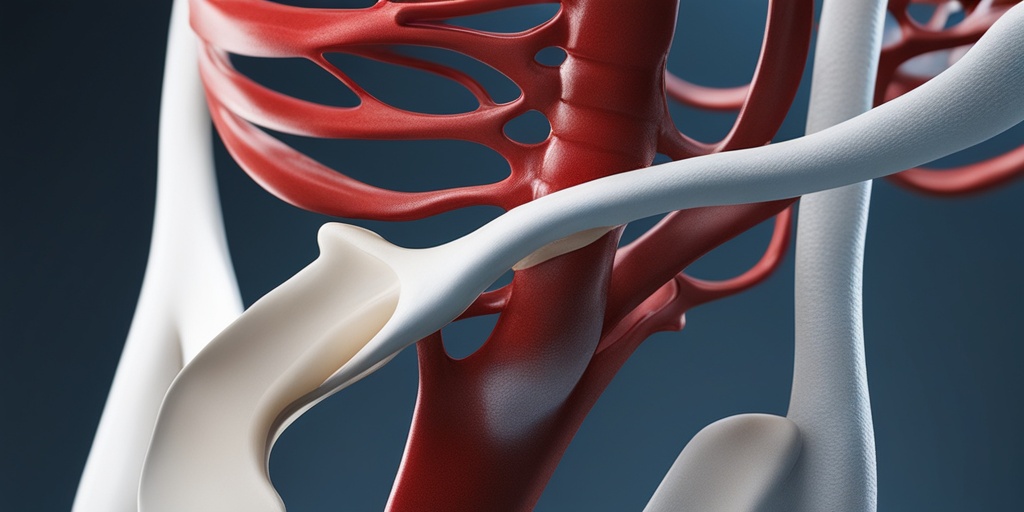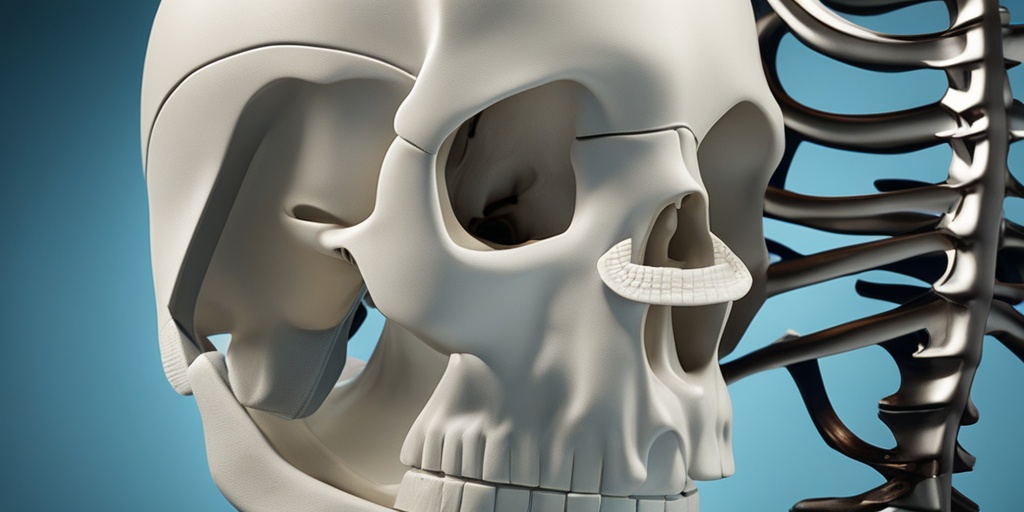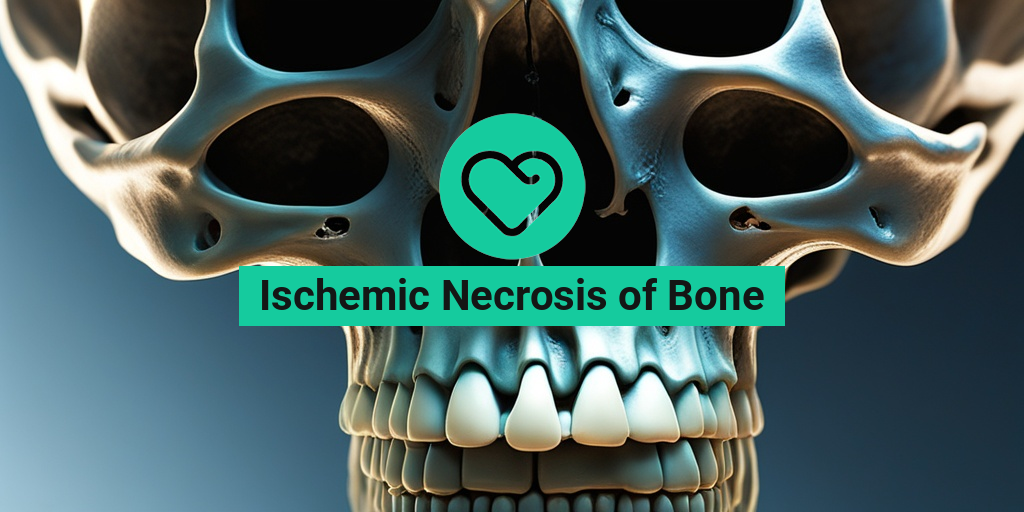What Is Ischemic Necrosis of Bone?
Ischemic necrosis of bone, also known as avascular necrosis (AVN), is a condition where the blood supply to the bone is disrupted, leading to bone tissue death. This can occur in any bone, but it most commonly affects the hip, knee, and shoulder joints. In this article, we’ll delve into the world of ischemic necrosis of bone, exploring its causes, symptoms, diagnosis, and treatment options.
What Causes Ischemic Necrosis of Bone?
The primary cause of ischemic necrosis of bone is a disruption in blood flow to the affected bone. This can occur due to various reasons, including:
- Trauma or injury: A fracture or dislocation can damage nearby blood vessels, leading to a reduction in blood flow to the bone.
- Blood clots or embolisms: A blood clot or embolism can block the flow of blood to the bone, causing tissue death.
- Infections or inflammation: Certain infections, such as osteomyelitis, or inflammatory conditions, like rheumatoid arthritis, can damage blood vessels and reduce blood flow to the bone.
- Medical conditions**: Certain medical conditions, like sickle cell disease, can increase the risk of ischemic necrosis of bone.
Symptoms of Ischemic Necrosis of Bone
The symptoms of ischemic necrosis of bone can vary depending on the location and severity of the condition. Common symptoms include:
- Pain: Pain in the affected joint or bone, which can be mild or severe.
- Stiffness: Stiffness or limited mobility in the affected joint.
- Weakened muscles: Weakness or atrophy of surrounding muscles.
- Limited range of motion: Reduced mobility or flexibility in the affected joint.
Understanding Avascular Necrosis
Avascular necrosis (AVN) is another term used to describe ischemic necrosis of bone. The term “avascular” means “without blood vessels,” which highlights the underlying cause of the condition. AVN can affect anyone, but it’s more common in people between the ages of 30 and 50.
Diagnosis and Treatment of Avascular Necrosis
Diagnosing avascular necrosis typically involves a combination of physical examinations, imaging tests (such as X-rays, MRI, or CT scans), and laboratory tests. Treatment options vary depending on the severity and location of the condition, but may include:
- Medications: Pain management medications, such as analgesics or anti-inflammatory drugs, to reduce symptoms.
- Physical therapy: Gentle exercises and stretches to improve mobility and strength.
- Surgery: In severe cases, surgery may be necessary to repair or replace the damaged bone.
If you’re concerned about ischemic necrosis of bone or avascular necrosis, it’s essential to consult with a healthcare professional for an accurate diagnosis and personalized treatment plan. Remember, early detection and intervention can significantly improve outcomes. 💊
For more information on ischemic necrosis of bone and avascular necrosis, visit Yesil Health AI, a valuable resource for evidence-based health answers. 🌟

Ischemic Necrosis of Bone Causes
Ischemic necrosis of bone, also known as avascular necrosis, is a condition where the blood supply to the bone is disrupted, leading to bone tissue death. But what causes this condition? Let’s dive into the possible causes of ischemic necrosis of bone.
Trauma and Injuries
A traumatic event, such as a fracture or dislocation, can damage the blood vessels surrounding the bone, leading to ischemic necrosis. This is especially common in the hip joint, where a fracture can disrupt the blood supply to the femoral head.
Joint Disorders
Certain joint disorders, such as osteoarthritis, rheumatoid arthritis, and gout, can increase the risk of ischemic necrosis. These conditions can cause inflammation and damage to the joints, which can lead to a reduction in blood flow to the surrounding bone.
Blood Clots and Vasculitis
Blood clots and vasculitis (inflammation of the blood vessels) can also cause ischemic necrosis. These conditions can block or reduce blood flow to the bone, leading to tissue death.
Medical Conditions
Certain medical conditions, such as sickle cell disease, Gaucher disease, and Fabry disease, can increase the risk of ischemic necrosis. These conditions can affect the blood vessels and reduce blood flow to the bone.
Medications and Radiation
Certain medications, such as corticosteroids, and radiation therapy can also contribute to ischemic necrosis. These can damage the blood vessels and reduce blood flow to the bone.
Risk Factors for Ischemic Necrosis
While anyone can develop ischemic necrosis, certain individuals are more at risk. Let’s explore the risk factors for this condition.
Age
Ischemic necrosis can affect people of all ages, but it’s more common in people between 30 and 50 years old. As we age, our blood vessels naturally narrow, increasing the risk of reduced blood flow to the bone.
Family History
If you have a family history of ischemic necrosis or other bone disorders, you may be more at risk of developing the condition.
Previous Injuries or Surgeries
If you’ve had a previous injury or surgery, especially to the hip or knee joint, you may be more at risk of developing ischemic necrosis.
Medical Conditions
Certain medical conditions, such as diabetes, high blood pressure, and blood clotting disorders, can increase the risk of ischemic necrosis.
Lifestyle Factors
Smoking and excessive alcohol consumption can damage blood vessels and increase the risk of ischemic necrosis. Additionally, a sedentary lifestyle and obesity can also contribute to the development of this condition.
By understanding the causes and risk factors of ischemic necrosis, you can take steps to reduce your risk and seek medical attention if you’re experiencing symptoms. 💡

Symptoms of Ischemic Necrosis of Bone
Ischemic necrosis of bone, also known as avascular necrosis, is a condition where the blood supply to the bone is disrupted, leading to bone death. The symptoms of ischemic necrosis of bone can vary depending on the location and severity of the condition. In this section, we’ll explore the common symptoms associated with ischemic necrosis of bone.
Pain and Discomfort
One of the most common symptoms of ischemic necrosis of bone is pain and discomfort. The pain can be mild, moderate, or severe, and it may worsen over time. The pain is usually localized to the affected joint or bone, but it can also radiate to other areas. For example, if the condition affects the hip, the pain may radiate to the groin or thigh.
Stiffness and Limited Mobility
As the condition progresses, the affected joint or bone may become stiff, making it difficult to move. This stiffness can lead to limited mobility, making everyday activities challenging. For instance, if the condition affects the knee, it may be difficult to bend or straighten the knee.
Weakness and Fatigue
Ischemic necrosis of bone can also cause weakness and fatigue in the affected limb. This weakness can make it difficult to perform daily activities, such as walking or climbing stairs.
Swelling and Redness
In some cases, the affected joint or bone may become swollen and red due to inflammation. This swelling can be painful and may worsen over time.
Decreased Range of Motion
As the condition progresses, the affected joint or bone may lose its range of motion. This can make it difficult to perform everyday activities, such as reaching or bending.
Diagnosing Ischemic Necrosis of Bone
Diagnosing ischemic necrosis of bone typically involves a combination of physical examination, medical history, and imaging tests. In this section, we’ll explore the common diagnostic methods used to diagnose ischemic necrosis of bone.
Physical Examination
A physical examination is usually the first step in diagnosing ischemic necrosis of bone. During the examination, the doctor will assess the affected joint or bone for signs of pain, stiffness, and limited mobility. The doctor may also perform a range of motion tests to assess the joint’s flexibility.
Medical History
The doctor will also take a detailed medical history to identify any underlying conditions that may be contributing to the development of ischemic necrosis of bone. This includes asking questions about previous injuries, medical conditions, and medications.
Imaging Tests
Imaging tests are used to confirm the diagnosis of ischemic necrosis of bone. The most common imaging tests used include:
- X-rays: X-rays can help identify bone damage or deformities.
- Magnetic Resonance Imaging (MRI): MRI scans can help identify bone marrow edema, which is a common sign of ischemic necrosis of bone.
- Computed Tomography (CT) scans: CT scans can help identify bone damage or deformities.
- Bone scans: Bone scans can help identify areas of bone damage or inflammation.
In some cases, the doctor may also perform a biopsy to confirm the diagnosis. A biopsy involves removing a small sample of bone tissue for examination under a microscope.
Early diagnosis and treatment of ischemic necrosis of bone are crucial in preventing further bone damage and improving outcomes. If you’re experiencing any symptoms of ischemic necrosis of bone, it’s essential to consult with a doctor for proper diagnosis and treatment. ⚕️

Treatment Options for Ischemic Necrosis
Ischemic necrosis of bone, also known as avascular necrosis, is a condition where the blood supply to the bone is disrupted, leading to bone death. While there is no cure for ischemic necrosis, there are various treatment options available to manage the condition and alleviate symptoms. In this section, we’ll explore the different treatment options for ischemic necrosis.
Conservative Management
In the early stages of ischemic necrosis, conservative management may be sufficient to manage symptoms and slow down the progression of the disease. This approach typically involves:
- Rest and physical therapy: Avoiding activities that put stress on the affected joint and engaging in physical therapy to improve range of motion and strength.
- Pain management: Using medications to manage pain and discomfort.
- Assistive devices: Using canes, walkers, or other devices to reduce stress on the affected joint.
Surgical Interventions
In more advanced cases of ischemic necrosis, surgical interventions may be necessary to repair or replace the damaged bone. Some common surgical options include:
- Core decompression: A procedure that involves drilling into the bone to reduce pressure and promote blood flow.
- Bone grafting: A procedure that involves transplanting healthy bone tissue to the affected area.
- Joint replacement: Replacing the damaged joint with an artificial one, such as a hip or knee replacement.
Alternative Therapies
In addition to conventional treatment options, some people with ischemic necrosis may find relief with alternative therapies, such as:
- Acupuncture: A traditional Chinese medicine technique that involves inserting thin needles into specific points on the body to stimulate healing.
- Massage therapy: A technique that involves manipulating soft tissue to promote relaxation and reduce pain.
- Stem cell therapy: A relatively new treatment approach that involves using stem cells to promote bone regeneration.
Medications for Ischemic Necrosis
While medications cannot reverse the damage caused by ischemic necrosis, they can help manage symptoms and slow down the progression of the disease. Here are some common medications used to treat ischemic necrosis:
Pain Relievers
Pain relievers are often used to manage pain and discomfort associated with ischemic necrosis. Some common pain relievers include:
- Acetaminophen: A common over-the-counter pain reliever, such as Tylenol.
- Nonsteroidal anti-inflammatory drugs (NSAIDs): Prescription-strength pain relievers, such as ibuprofen or naproxen.
- Opioids: Strong pain relievers, such as oxycodone or hydrocodone, typically reserved for severe pain.
Bisphosphonates
Bisphosphonates are medications that can help slow down bone loss and reduce the risk of fractures. They are often used in combination with other treatments to manage ischemic necrosis.
It’s essential to work closely with your healthcare provider to determine the best course of treatment for your specific case of ischemic necrosis. With the right combination of conservative management, surgical interventions, and medications, it’s possible to manage symptoms and improve quality of life. 💊

Frequently Asked Questions about Ischemic Necrosis of Bone
What is Ischemic Necrosis of Bone?
Ischemic necrosis of bone, also known as avascular necrosis, is a condition where the blood supply to the bone is interrupted, leading to bone death and collapse.
What are the Causes of Ischemic Necrosis of Bone?
The causes of ischemic necrosis of bone can vary, but some common ones include:
- Joint trauma or injury
- Blood clots or bleeding disorders
- Infections such as sepsis
- Cancer and its treatment
- Sickle cell disease
What are the Symptoms of Ischemic Necrosis of Bone?
The symptoms of ischemic necrosis of bone can vary depending on the location and severity of the condition, but common ones include:
- Pain in the affected joint or bone
- Stiffness and limited mobility
- Weakened muscles
- Difficulty walking or bearing weight
How is Ischemic Necrosis of Bone Diagnosed?
Diagnosis of ischemic necrosis of bone typically involves a combination of:
- Medical history and physical examination
- Imaging tests such as X-rays, MRI, or CT scans
- Bone scans or biopsies
What are the Treatment Options for Ischemic Necrosis of Bone?
Treatment for ischemic necrosis of bone depends on the severity and location of the condition, but may include:
- Pain management with medication
- Physical therapy to improve mobility and strength
- Surgery to repair or replace the affected bone or joint
- Bone grafting or joint replacement
Can Ischemic Necrosis of Bone be Prevented?
While ischemic necrosis of bone cannot be completely prevented, taking steps to reduce the risk of injury or underlying conditions can help:
- Wearing protective gear during sports or high-impact activities
- Managing underlying medical conditions such as sickle cell disease
- Avoiding excessive alcohol consumption
- Maintaining a healthy weight and diet
What is the Prognosis for Ischemic Necrosis of Bone?
The prognosis for ischemic necrosis of bone varies depending on the severity and location of the condition, as well as the effectiveness of treatment. In some cases, the condition can lead to chronic pain, limited mobility, and decreased quality of life.
Is Ischemic Necrosis of Bone the Same as Avascular Necrosis?
Yes, ischemic necrosis of bone is also known as avascular necrosis. Both terms refer to the same condition, where the blood supply to the bone is interrupted, leading to bone death and collapse.
Can Ischemic Necrosis of Bone Affect Any Bone in the Body?
Yes, ischemic necrosis of bone can affect any bone in the body, although it is more common in the hips, knees, and shoulders.
Is Ischemic Necrosis of Bone a Chronic Condition?
Yes, ischemic necrosis of bone can be a chronic condition, requiring ongoing management and treatment to manage symptoms and prevent further bone damage.




